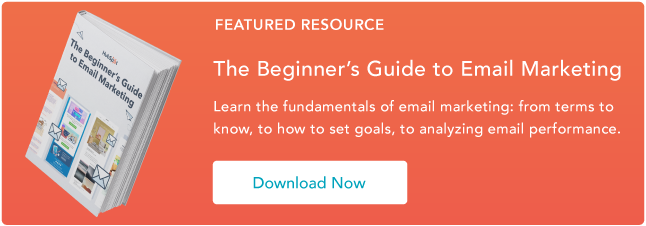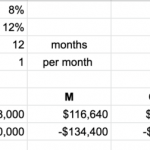- Like
- SHARE
- Digg
- Del
- Tumblr
- VKontakte
- Flattr
- Buffer
- Love This
- Save
- Odnoklassniki
- Meneame
- Blogger
- Amazon
- Yahoo Mail
- Gmail
- AOL
- Newsvine
- HackerNews
- Evernote
- MySpace
- Mail.ru
- Viadeo
- Line
- Comments
- Yummly
- SMS
- Viber
- Telegram
- JOIN
- Skype
- Facebook Messenger
- Kakao
- LiveJournal
- Yammer
- Edgar
- Fintel
- Mix
- Instapaper
- Copy Link
There are a few things in life that can earn you that “official” status.
For me, it’s anytime I see someone with a blazer or suit. I think “Oh, that person is definitely handling business today.” Probably because in Miami, the only time anyone subjects themselves to multiple layers in this heat is for official business.
Online, a verification badge gives you some official points. A great-looking website takes it that much further. But a custom email domain? Well, that’s peak official. It signals structure and organization.
Let’s talk about the benefits of getting a custom email domain and how to get one.
What is a custom email domain?
A custom email domain, like info@yourwebsite.com, is a unique branded email address. It adds credibility, helps gain consumer trust, and allows you to keep your business emails organized.
Personalized email domains can be used for both your employees and the departments in your company.
There are two types of personalized email domains:
- A regular custom email domain – This includes an inbox and has all the features of a regular email service.
- A forwarding email domain – This is only a customer-facing alias used to forward emails and doesn’t have an inbox. Ex: You set up support@yourcompany.com and have all emails sent to that address forwarded to martina@yourcompany.com or martina@gmail.com.
If you’re a small business and don’t anticipate a high volume of emails, you can start out with a forwarding custom email domain. It looks professional and you don’t have to sift through a separate inbox, as all emails will go to another inbox.
However, as your company grows, you’ll likely need to invest in a separate inbox for your business emails.
Benefits of a Custom Email Domain
We’ve already covered how a personalized email domain looks “official,” but let’s talk about what that means in concrete terms.
Back in 2016, GoDaddy ran a survey and found that 75% of Americans think a domain-based email is a key factor in trusting a small ecommerce business. They even ranked it as three times more important than having an active social media channel.
The report also revealed that some consumers (about 24%) would hesitate to share their personal information with a seller using a personal email address.
It’s likely that these figures have gone up recently, given the prevalence of email phishing attacks. Today, consumers may be a little bit warier of a business without a custom email domain and with one that doesn’t match its website.
When you have a custom email domain, it adds to your credibility and serves as another way to show consumers that you are a reputable company.
In addition, a personalized email domain helps you organize your incoming emails based on the various departments within your company.
For instance, you can have info@yourcompany.com for consumers to send their general inquiries. You could have shipping@yourcompany.com for order-specific inquiries, and countless others based on your business needs.
This can be incredibly helpful in managing incoming and outgoing emails, especially as your company grows. You may also want to designate a team member to be the directly responsible individual (DRI) for that email account.
Lastly, it’s important to have a separate email domain for your business to streamline your email marketing efforts. As you develop a plan for your email communications with your consumers, You’ll likely invest in email marketing software to manage, track and analyze your activities.
Having a custom email domain will ensure your personal data doesn’t get mixed in with your business analytics and dirty your data.
How to Get a Custom Email Domain
- Select an email provider.
- Purchase or connect your domain.
- Select your users and/or aliases.
- Choose an email address format.
Before you select your email provider, here are a few things to know and features to consider:
- The cost per user – Some email providers charge by user while others offer unlimited users for one monthly price.
- The storage size – Email providers typically offer various packages, each with a different storage amount, ranging from 5GB to unlimited. Consider the volume of emails you expect to receive and use that to guide which one you select.
- Aliases – If you want to use a forwarding email, look for an email provider that allows you to create domain aliases that can be sent to other inboxes.
- Spam filter – Look for a provider with advanced filtering capabilities to avoid filling up your inbox with spammy emails.
- Your website domain – Most providers require you to have a website domain associated with your custom email domain.
1. Select an email provider.
There are many email providers to choose from, including Google Workspace (formerly G Suite), Microsoft 365, Hostinger, and Ionos.
Many web hosting and designing companies like Wix and GoDaddy allow you to create your own custom domain right on the platform (usually from Google Workspace and Microsoft 365) and connect it with your website.
This feature can be included in your current package or available at an additional monthly cost, depending on the platform.
2. Purchase or connect your domain.
Once you select a provider, you’ll likely have to connect it to your website domains.
Google Workspace, for instance, requires users to have a linked website to create a custom email domain.
In most cases, you can connect the provider to an existing domain or purchase one on the spot.
3. Select your users and/or aliases.
Now that you have your personalized email domain, it’s time to select your users.
Let’s say you have employees, you may need to create accounts for them. This is something only an administrator can manage through your admin dashboard. Some providers only allow a certain number of users per plan.
Now, onto the departments. Decide if you want to create aliases for specific departments that get forwarded to other email addresses or want designated email addresses.
For instance, if you’re a small team, you may create a support@yourcompany.com email that goes right in your personalemail@gmail.com inbox. If the volume gets high, you may want to make support@yourcompany.com its own user to have a designated inbox for all support-related inquiries.
Knowing what you’ll need ahead of time will help decide which provider and plan best suits your business needs.
4. Choose an email address format.
When you have custom email addresses, consistency and simplicity are key. This makes it easy for people to reach you.
For your employees, you can have the following formats:
Select the one that makes the most sense for your business.
For your departments, try to keep it to one or two words. Here are a few examples:
- General inquiries – info@, contact@, hello@, questions@
- Customer service – support@, billing@, shipping@, returns@, orders@
- Sales – sales@, demo@
- Marketing – press@, media@, pr@
- Human Resources – hr@, jobs@, careers@
Getting a personalized email domain for your business is a key step in achieving an “official” stamp from your audience online. It’s a worthy investment that can strengthen consumer trust in your brand and make them more likely to purchase from you.
Originally published Jun 28, 2021 3:27:12 PM, updated June 28 2021
![4-easy-steps-to-get-a-custom-email-domain-[+-key-features-to-look-for]](https://everythingflex.com/wp-content/uploads/2021/06/8500-4-easy-steps-to-get-a-custom-email-domain-key-features-to-look-for.jpg-23keepProtocol)
![→ Download Now: The Beginner's Guide to Email Marketing [Free Ebook]](https://no-cache.hubspot.com/cta/default/53/53e8428a-29a5-4225-a6ea-bca8ef991c19.png)


